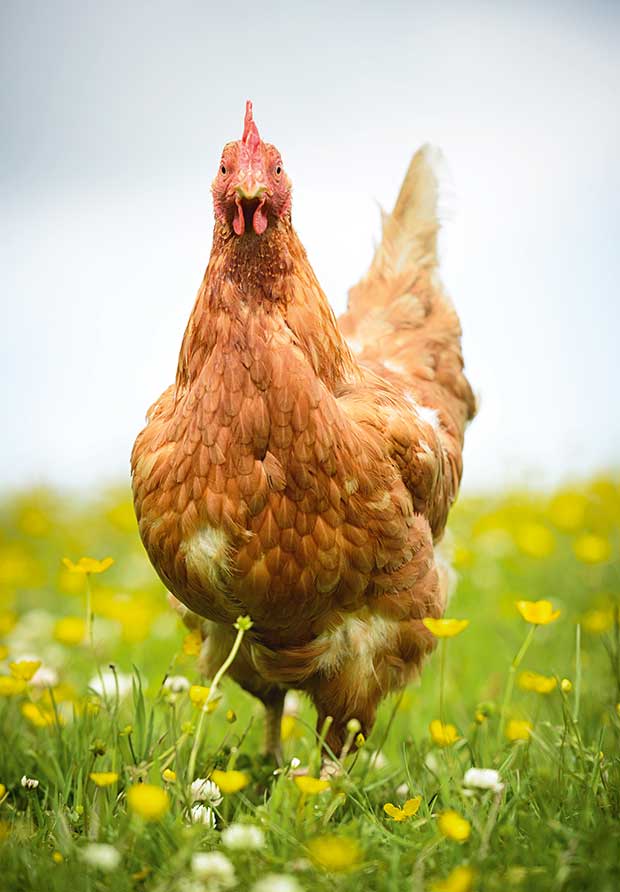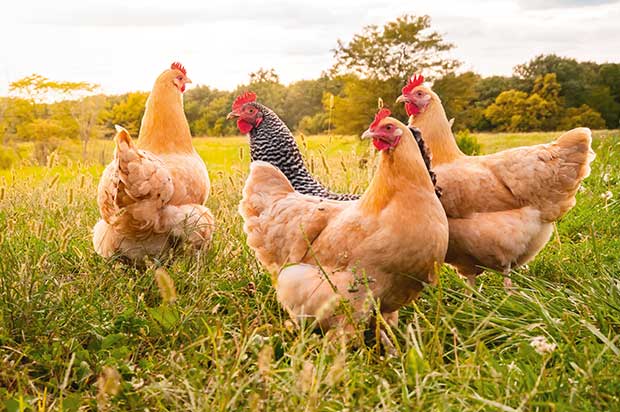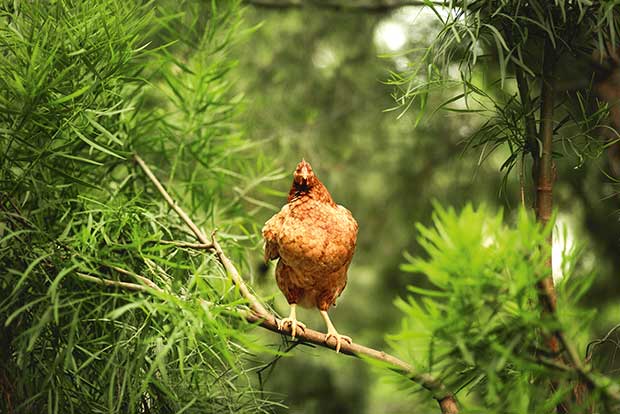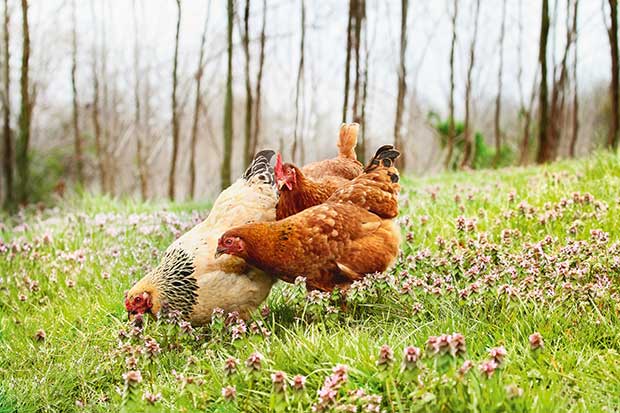5 types of common free range poultry set-ups

There are many different interpretations of what ‘free range’ means, and it’s hard work to create and maintain one that works well all year round.
Words: Sue Clarke
The term ‘free range’ is often used in advertising these days. It is usually accompanied by images of sunshine and green pastures with flocks of healthy chickens living a happy life. However, the interpretation of the term and the reality of a range where poultry roam free can be quite different. There can be practical reasons that make it difficult to give poultry a good quality natural environment.

THE CLIMATE VARIES
The sun does not always shine and the grass is not always green. The sun may be blisteringly hot and the ground like concrete, bereft of vegetation. It could be deep in snow for months of the year. In this country, it is more likely to be windy, overcast and muddy underfoot for about half of the year.
In advertising, poultry are always pictured on the most idyllic of days in prime condition. However, anyone with poultry knows the cycle of life includes seasonal moults where birds can look very scruffy, and the wear and tear of old age.
FREE RANGE IS LIMITED
The term ‘free range’ implies unlimited freedom to roam. However, as with all farmed livestock there are limits on just how far a chicken can go. Even herds of free-ranging wild animals like bison in North America or elephants and antelopes in Africa are often confined by man-made structures like National Park boundaries and roads or environmental barriers like rivers, lakes, sea or mountains.

When the term ‘free range’ was first used to describe the keeping of domestic poultry commercially, it sometimes referred to hens that were free to move around but were still inside a shed. This is now known as ‘barn-housed’ or ‘barn-raised’. Barn-raised birds are able to move at will within the confines of the building, but remain protected from the extremes of weather and from predators. There is an unlimited supply of food and water and, in the case of layer hens, access to perches and nests for laying.
New Zealand has an animal welfare definition of what is meant by ‘free range’ for the commercial layer hen industry. For eggs to be labelled free range, the flock must comply with and pass inspection for criteria laid down by NAWAC, the National Animal Welfare Advisory Committee in the Animal Welfare (Layer Hens) Code of Welfare 2012.
This criteria is a useful starting point for anyone with a backyard flock.
WHAT THE CODE SAYS ABOUT MANAGEMENT
“Maintenance of good conditions on the range is essential for the health and welfare of hens. Hens are fearful of wide open spaces and so providing and managing overhead shade and shelter on the range encourages its use and allows the hens to display a wider range of natural behaviours.
“Fear of using the range may increase stress of hens inside the shed and can lead to negative behaviours such as injurious feather pecking. Research shows that providing a variety of shade and shelter is beneficial, particularly natural shelter from trees and shrubs positioned to encourage the hens to move away from the barn perimeter.”
5 common types of free range poultry set-ups

1. Birds have complete and free access to grounds, gardens, paddocks and bush, and have no coop or house but roost and lay wherever they choose.
2. Birds have free access to a wide area but usually come home to a permanent coop or house at night where nest space, food and water is made available, and they may or may not be shut in.
3. Birds are confined to an area where they may scratch and forage but are behind a fence which keeps them in (or out of the garden) and have access to a coop/house or shelter.
4. Birds have a coop/house with a small permanent run attached, to confine their roaming.
5. Birds are confined within an area that may have an open-air yard, sometimes known as a ‘winter garden’ which may have a pebble, sand or bark chip floor and a roof, but open sides. Food, water, nests and perches are placed inside the house area.
The domesticated chicken is descended from jungle fowl found in parts of Asia. These birds live in forests where they have cover which helps to keep them safe from predators. They venture out onto its edges or a little further to find food, but they don’t go too far from it in case they need to escape or hide from danger. They also prefer a warm temperature (20-23°C).
While your backyard flock is a long way from the jungles of Asia, you need to bear some of their programmed natural behaviours in mind when trying to provide a good quality habitat for your free range flock. Ideally, you want to provide them with:
• shelter from hot sun, wind and rain
• protection from predators
• a wide range of plants, insects and invertebrate life to provide nutrition
• a coop which is neither too hot in summer nor too cold in winter.
Sue’s coop tips:
Insulating the roof area of a coop can help regulate temperature and humidity. Also ensure prevailing wind, driving rain or bright sunlight cannot come directly through any openings.
Love this story? Subscribe now!
 This article first appeared in NZ Lifestyle Block Magazine.
This article first appeared in NZ Lifestyle Block Magazine.
